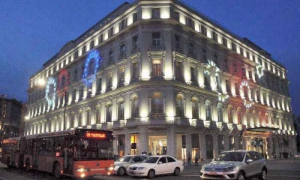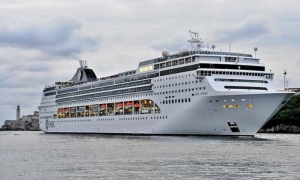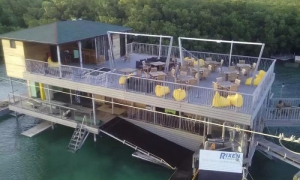
EVERY nation takes pride in its people, culture, traditions, the achievements of its scientists, but also in its most beautiful landscapes, its flora and fauna.
Cubans are, first and foremost, proud of a country which has successfully carried out a large-scale revolution in the midst of an over 50 year economic blockade.
And little by little this revolution overcame obstacles and went about preparing its people, providing free, universal, non-discriminatory education to children of campesinos, workers, all races, women and men, who were able to create a society like the one we have today; to help the most disadvantaged communities, training doctors, teachers, technicians, engineers, which have put this small and stoic nation in an important global position, recognized by international institutions such as the United Nations Educational, Scientific and Cultural Organization (UNESCO), the World Health Organization (WHO) and the UN Food and Agriculture Organization (FAO), among others.
This is why those who suffered the threat of being “punished” for setting foot on the island, are now making the most of the opportunity to travel to the country with increasing numbers of visitors; coming to witness the Cuban phenomenon, learn about the nation’s culture, see how it has looked after its children and the elderly, how it manages to keep producing the best tobacco and rum on the international market; experience the feeling of solidarity with which its men and women set off to tackle illiteracy, first on the island and later in remote areas across the world, just as they have done in the fight against Ebola, cholera, or in the wake of natural disasters. Meanwhile, almost all visitors also want to enjoy the island’s white sand beaches or its singular and diverse natural environment.
Thus, it comes as welcome news for the nature lovers among us that sector institutions have finally decided to draw back the country’s green curtain, offering its national parks, waterfalls, rivers, its small and varied species of birds and flora, to be enjoyed by tourists in a sustainable and environmentally friendly way.
Cuba’s western-most province, Pinar del Río, is a prime example of one of the most beautiful territories in the country, in particular the Valley of Viñales, with its iconic hillocks, declared a World Heritage Cultural Landscape by UNESCO in 1999 and later a National Monument and Park.
The Valley is considered to be symbolic of the island’s natural environment, and is probably one of the most well-known Cuban locations aboard.
Pinar del Río has two UNESCO Biosphere Reserves which act as the habitat for endemic species of Cuban flora and fauna, part of the unique and beautiful natural landscape of the Guaniguanico mountain range. One of these, nestled in this area, is the Sierra del Rosario Biosphere Reserve - located next to the Sierra los Órganos zone, in which the Valley of Viñales lies - whose most noteworthy attributes include its high levels of biodiversity, with over 1,200 exemplars of flora and more than 160 of fauna.

It is precisely in this zone that the Mil Cumbres Managed Resource Protected Area (APRM) is found, one of the most important of its kind, due to its abundant biodiversity and the breathtaking beauty of its landscapes.
However, arguably the most important feature are its vast and well preserved forests, spread over the 17,342 hectares. A large variety or trees, such as palms, oaks, ceibas, guacimos, snakewoods, and many others, can be found here. The image is completed by a remarkable backdrop: curiously shaped massifs which look like huge prehistoric animals; and pine trees everywhere, whose diverse species practically overtake the landscape; as well as the Cork Palm (Microcycas calocoma), an endemic plant regarded as a “living fossil”, dating back to when gigantic reptiles once roamed the planet.
On countless occasions I have coursed, palm by palm, this patchwork landscape covered with diverse forests, climbed to the highest summits of the region including Pan de Guajaibón mountain (almost 700 meters above sea level), and seen the enormous majaes de Santa María (Cuban boa constrictors), and other more common reptiles such as the Anolis vermiculatos or curly-tailed lizard. The region is also home to various cultural riches, such as archeological sites, 19th century haciendas, the remnants of a runaway slave community, battle grounds from the Wars of Independence and part of a more recent history; the Cueva de los Portales, where Ernesto Che Guevara’s command headquarters was based during the October 1962 Cuban Missile Crisis.
Also apparent is the impact of valuable human efforts undertaken to conserve nature, with the reforestation of large areas and the construction of trails for ecotourism.
If that wasn’t enough, the province also has a second Biosphere Reserve: Guanahacabibes, in the westernmost part of the island, found in the region Cuban’s call the caiman’s tail, given the similarity between the shape of the island and the reptile.
Guanahacabibes is a must for visitors wanting to practice scuba diving, as its coastline boasts some of the richest, most diverse and beautiful ecosystems in the Cuban archipelago. The corral reefs which lie beneath the waters at this point on the insular shelf see countless visitors, who come to enjoy and discover the mysterious and thriving underwater world. Others, however, might prefer to take a stroll along the various trails located throughout the 1,060 square kilometer pristine nature reserve, which offer a stunning natural panorama.







